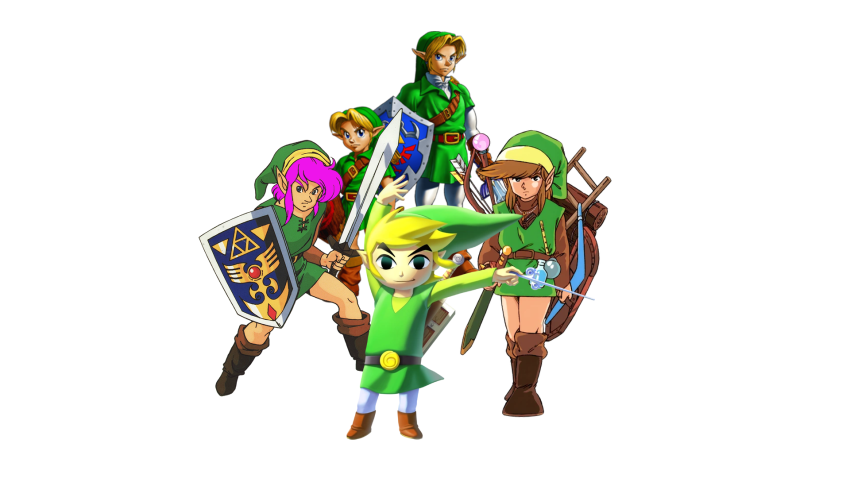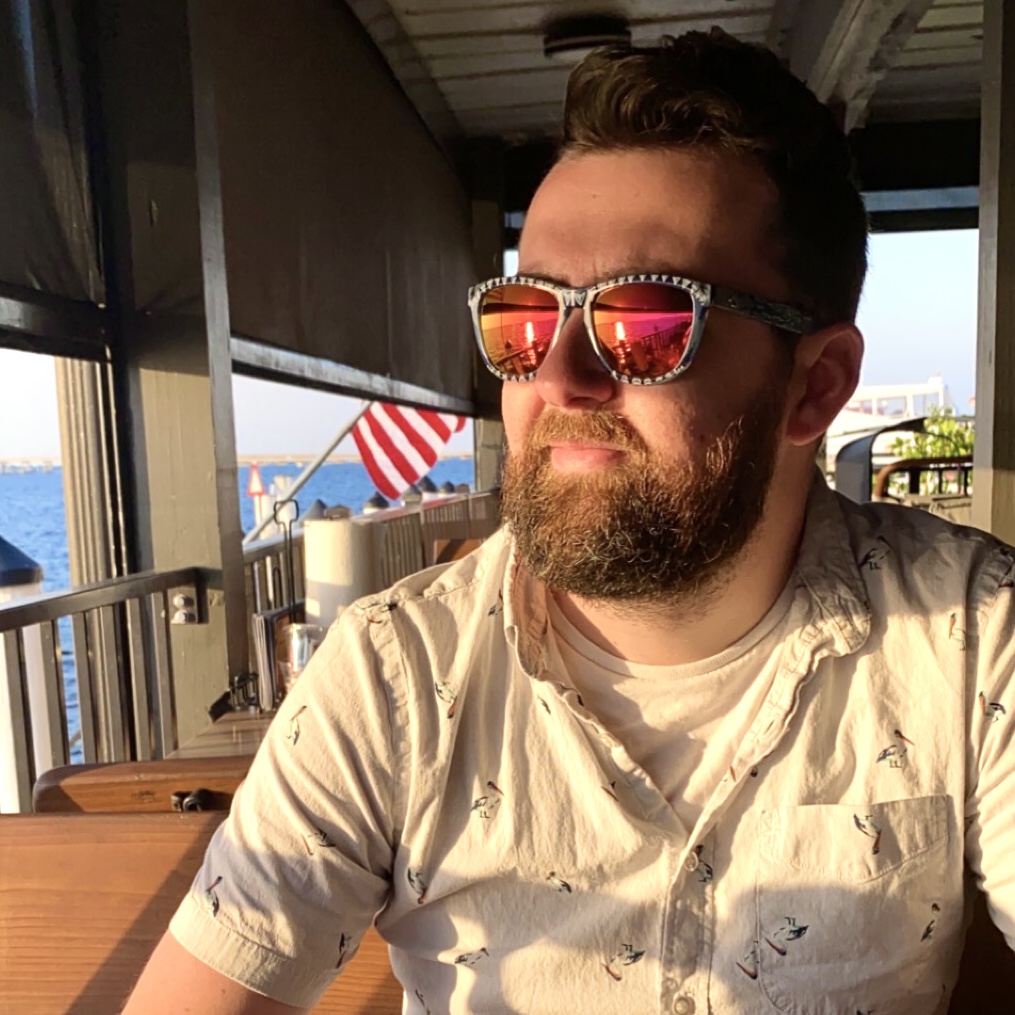The Wind Waker Solidified the Different Links And Cemented the Legend
Posted on August 26 2023 by John Furby

A world of water with islands scattered across it, hosting only a handful of inhabitants settled amongst them, without a country to unite them. When our hero awakes, it’s not into a medieval land filled with castles, dark forests, and sprawling green fields to ride horses across, but a tropical ocean as far as the eye can see. Link isn’t thrust into an adventure to save a princess from the get-go; there’s only a simple request to meet his grandmother on his birthday. Our first in-game hint of the legend that came before is the ceremonial tunic and pointy hat he’s given to commemorate his coming of age and the Hero vanished long ago into myth. This is a different Hyrule. A different game. And to my utter surprise, a different Link altogether.
Having played every Legend of Zelda game up to The Wind Waker, by this point, I pretty much knew the drill. Link wakes up, Princess Zelda (or her equivalent) needs rescuing, and Hyrule (or its equivalent) needs saving from Ganon (or his equivalent). The formula deviated slightly from time to time (Majora’s Mask), but mostly you knew what you were in for and you knew who Link was.
Before you awaken to the sea, you’re presented with, in my humble opinion, the greatest opening cinematic of any Zelda game. A somber flute leading into a triumphant violin, playing over an ancient scroll (a style seemingly referenced in Breath of the Wild’s/Tears of the Kingdom’s ancient scroll art) depicting a legend we knew well at that point: the tale of Ocarina of Time. A boy in green emerges to fight the dark with light and travels through time to become a hero. But then we learn what happens after: the evil returns and the hero doesn’t.

So who are we playing as in The Wind Waker? Who is this little cartoon blonde island boy? His name is Link. He eventually wears a green tunic and hat. He swings a sword. But who is he? If he is the Link we’ve played before, how did the Hero of Time end up on this remote island with a grandmother and a sister?
Since I had created my own timeline based on the information given to us in the games and their manuals (the official timeline was still years away), this very different setting did not vibe. My timeline went a little something like this:
- Ocarina of Time is the origin story where Link learns of his destiny and meets Zelda and destroys Ganon the first time. Majora’s Mask is its sequel.
- A Link to the Past recounts the sealing away of Ganon (the first mention of the Imprisoning War in canon) and shows Ganon’s return through Agahnim.
- Link’s Awakening and the Oracle games, since they were very similar in style to A Link to the Past, showed Link’s travels post Ganon’s defeat, and his third rise and defeat if you play both Oracle games.
- The Legend of Zelda and Adventure of Link happened after Link’s return to Hyrule from his travels and ends with the halt of the resurrection of Ganon and a sweet kiss from an awakened Zelda.

Where could The Wind Waker possibly fit into the Hero of Time’s journeys? As a youngster, I just ignored that Zelda introduces herself to Link “again” in A Link to the Past as if they’ve never met. I ignored Link’s Uncle, thinking we just hadn’t heard from him before or he was retconned out of Ocarina of Time. I wrote off the appearance and disappearances of the various races of Hyrule as creative changes to the series. For some reason, I needed these games to be a continuous plot, and I did mental backflips to make it work.
Then you learn what happened to old Hyrule and why this new land was nothing more than a bunch of tiny islands on the Great Sea. After the Hero of Time never returned, the gods drowned Hyrule in a biblical flood to snuff out Ganon’s return and abandoned Hyrule into myth and memory. Only the tips of mountains remain protruding from the sea. Hundreds of years had to pass for the seas to rise, for the Zora to evolve into the Rito, and for the people of Hyrule to forget they were even the people of Hyrule.
At that moment, I was very aware this was a different Link. This wasn’t just another stop on his boat tour after A Link to the Past. He had a family. He’d never heard of Hyrule. He didn’t know any Zelda. He was even more distanced from his destiny than the Ocarina-era Link. Everything changed with my mindset about the meaning of the legend part of The Legend of Zelda.

The official timeline was kept a tight internal secret until 2011 when it was first published in Hyrule Historia. Skyward Sword was established as the beginning of Hyrule. Ocarina of Time became a split in time to different branches of the story. Fans like me have spent years wondering where Breath of the Wild and Tears of the Kingdom fall into the canon, as no official announcement has been made as of yet. These newer games feel very similar to The Wind Waker: stories of a legendary hero happening so long ago that they were eventually forgotten in time. Only their various clothes and weapons remain as Easter Eggs for Link to find.
For me, The Wind Waker was the spark of that idea of a larger legend played out over vast swaths of time. The existence of different Links is a simple and effective story mechanic ensuring many more Zelda games can be made without affecting any part of the continuity, if that’s something you think about constantly, like I do. And all this comes from a game widely written off at release as a cutesy cartoon (incorrect) with too much sailing (also incorrect), but ended up cementing the idea of an enduring legend of generational heroes fated to save the world.
When did you first realize you were playing different versions of Link? Did it change your perception of the series as a whole? Let us know in the comments.

John Furby joined the Writing Team at Zelda Dungeon in mid-2023, and has been a Zelda fan since the age of four in the distant past of 1988. He graduated from Columbia College Chicago with a degree in Film/Video with a concentration in Screenwriting. When he’s not spending his free time traveling through the newest incarnation of Hyrule, he raises a sassy and powerful daughter. Somehow he also finds time to collect video games, action figures, comics, VHS, vinyl and cassettes, LEGO, Nintendo Power magazines, and old fancy phones, all while golfing, writing screenplays, editing video, and enjoying a snifter of port at Christmas.



